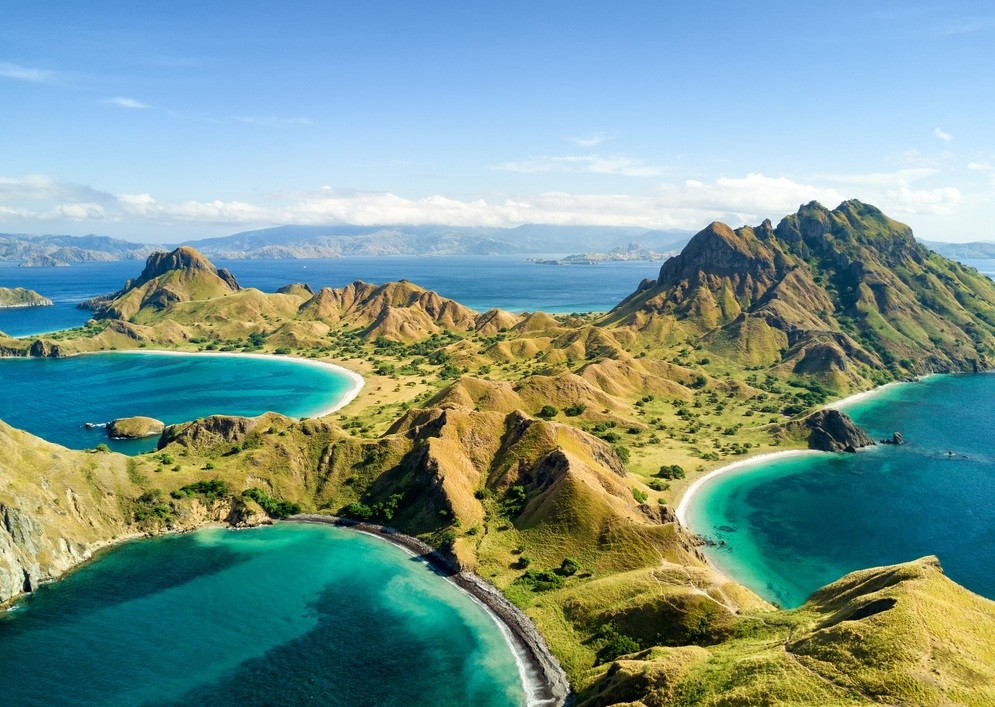Popular Reads
Top Results
Can't find what you're looking for?
View all search resultsPopular Reads
Top Results
Can't find what you're looking for?
View all search resultsLabuan Bajo faces challenges with rising tourism
Change text size
Gift Premium Articles
to Anyone
A
s Labuan Bajo in East Nusa Tenggara is growing as Eastern Indonesia's brightest tourism jewel, the popular destination is facing challenges in maintaining its shine.
Located in the West Maggarai regency, Labuan Bajo usually serves as the arrival point for tourists to continue on their journey to the famous Komodo National Park. With rising large number of visitors, the region faces less-than-desirable challenges, such as mounting trash, illegal fishing and coral vulnerability.
Jensi Sartin, Komodo MPA coordinator, speaking to The Jakarta Post recently, said the Komodo National Park and its surrounding area, including the coastal area of Labuan Bajo, can compile in one day an average of 13 tons of trash. She added that the trash includes 35 to 40 percent of inorganic waste that contains saleable plastic waste.
Dwi Putro Suguiarto, Komodo National Park's administration head, explained that the three main sources of trash accumulated included those brought onto the coast from the ocean, visitors' litter, as well as rubbish of local residents.
"To solve the garbage problem in the islands within the Komodo National Park, there would be a waste ship assistance from the Transportation Ministry in 2018," Sugiarto told the Post on Aug. 28.
Read also: Komodo Island among Vogue’s top places to visit this summer
The park, which in 2012 was determined to span across 173,200 hectares in area, produces one of the country's highest economic contribution among all other national parks, Sugiarto said. Entrance revenue in the Komodo National Park in 2016 was worth Rp 22 billion (US$1.65 million).
Citing official data, Sugiarto said visitors between June and January 2017 reached 51,954 across both national and foreign tourists. Throughout 2016, the park welcomed 107,000 visitors.
The park official explained that despite the high number of tourists, the Komodo population is maintained at a stable rate, with 3,012 living in the area.
Sugiarto explained that seeing rare animals such as the Komodo, as well as diving to see the manta ray fish and sharks have become magnet for domestic and foreign tourists to visit the region.
"We continue to conduct surveillance and protection in the Komodo National Park area in order to maintain the biodiversity wealth well," Sugiarto said.
Susi, meanwhile, said illegal fishing is another challenge that the region faces.
A recent WWF survey also found 750 sharks, mostly baby sharks, were sold in Labuan Bajo within the past four months, she added. However, it is not yet known whether the fish were caught within the Komodo National Park area or outside of it.
"The main attraction of foreign and domestic tourists to visit West Manggarai is to see the manta ray fish and sharks, as well as the natural wealth under the sea in the Komodo National Park area. Trips to the islands Komodo and Rinca only takes one or two hours, the rest of the time would be spent on the living boat for diving," Susi said.
Read also: Five must-visit places in Komodo National Park
Boats throwing anchor at sea is another risk as it could hit the corals, Susi said, adding that both tourists and fishermen are prone to do it.
A ship anchor hitting the coral reefs could subsequently lift and damage the reefs. Markers to signal designated areas to place an anchor have not been prepared in the tourist areas such as Pink Beach and other diving spots, Susi said.
Nevertheless, the tourism industry continues to move forward. Silvester Wangge, Hotel and Restaurant Indonesia Association (PHRI) of West Manggarai Branch chairman, explained the growth of luxurious hotels and restaurants in Labuan Bajo continues to increase.
There are currently 70 international standard hotels in Labuan Bajo, Silvester said, noting that there are also many investors from Italy.
But with a growing of tourism, basic necessities in the areas are still lacking, as Marsel Agot, an environmental activist in the region, said the clean drinking water for communities in the islands within the Komodo National Park requires serious attention and concrete action from the government.
"I hope the government and the Komodo National Park Authority also pay attention to the problem of clean drinking water difficulties. Hundreds of foreign and domestic tourists visit to the Komodo National Park area but the distress of the local residents meanwhile has been overlooked," Marsel said. (liz/kes)
Editor's note: Paragraph 3, 11 and 12 in this article has been corrected.







